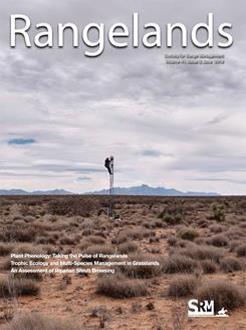Large patches of dry conifer forests have burned as high intensity crown fire, threatening life, property and natural resources.
Conservation practices such as mechanical thinning can reduce crown fire potential while promoting other benefits such as restoring forest heterogeneity, reducing post-fire erosion risk, and improving wildlife habitat.
We report on a pilot study to apply landscape-scale effects modeling in the Colorado Front Range as a potential framework for forestlands CEAP.
Spatially explicit estimates of conservation benefits to multiple resources provide a quantitative means to evaluate competing projects and to prioritize conservation outreach.
How to translate text using browser tools
5 December 2019
An Effects Assessment Framework for Dry Forest Conservation
Jeffery B. Cannon,
Benjamin M. Gannon,
Jonas A. Feinstein,
Brett H. Wolk
ACCESS THE FULL ARTICLE

Rangelands
Vol. 41 • No. 5
July 2019
Vol. 41 • No. 5
July 2019
Conservation Effects Assessment Project (CEAP)
erosion risk
fire hazard
forest conservation
forest heterogeneity
landscape-scale modeling




